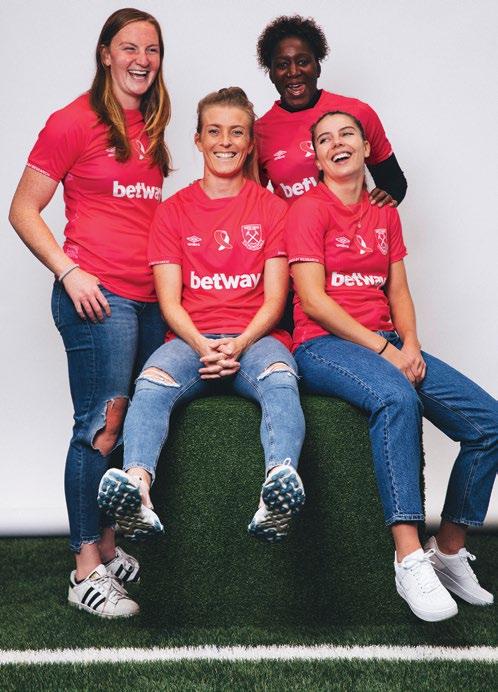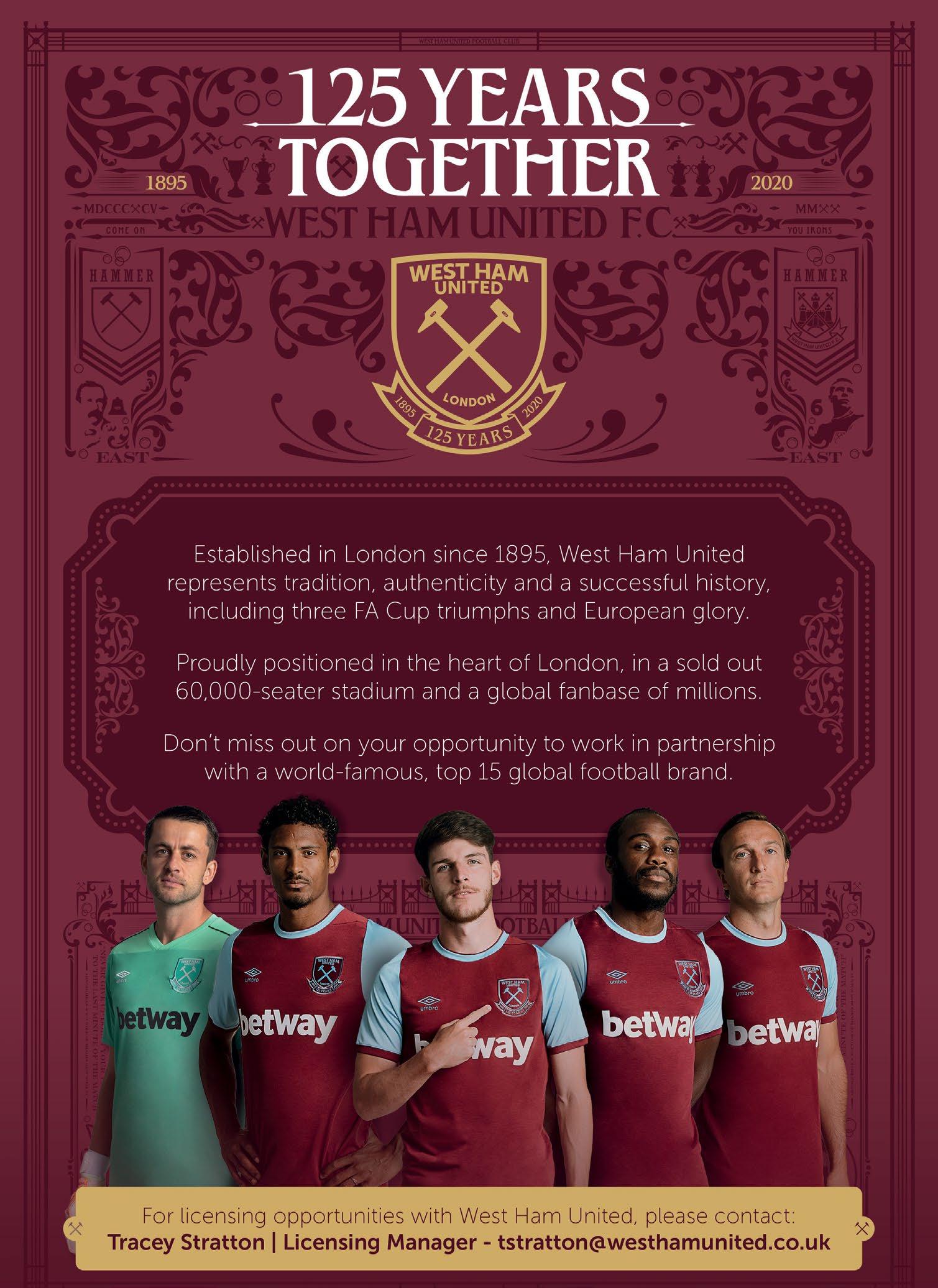
9 minute read
Cover Story
The Heritage, The History, The Future...
With their attractive style of play, claret and blue jerseys and a catchy anthem, West Ham United are certainly a unique beast in the football world. Since the early 50s, the club has been known as “The Academy of Football”, with many young and talented players coming through their ranks. With a proud tradition in English football for playing entertaining, attacking football. It is an approach that has thrilled millions since the east London club was formed It is 125 years since the Football Club now known throughout the world as West Ham United came into existence. Even though the club was reformed as West Ham United FC at the turn of the twentieth century, their roots go back to 1885 and the foundation of Thames Ironworks FC. The club was founded by Arnold Hills, the director of the Thames Ironworks shipyard department, the huge shipyard and ironworks famous for its 1860 launch of HMS Warrior, at the time
the biggest warship in the world; the idea was that a football team would improve the relations between the management and the workers. Their humble beginnings as a works team are a big part of West Ham’s history, which is most evident in the club’s most popular nicknames (the Hammers and the Irons), as well as in the club’s crest, which still features a pair of crossed rivet hammers. Thames Ironworks FC’s first-ever match took place at Hermit Road on 7 September 1895, with the opposition being Woolwich Arsenal’s reserve team, Royal Ordnance and ending in a 1-1 draw and followed by a number of friendlies against local opposition. The Ironworks then played their first competitive match on 12 October 1895. Chatham were the hosts in the FA Cup, with the tie being switched to Kent after the opposition claimed the Hermit Road pitch was ‘unsuitable’. Although the 5-0 loss wasn’t the start Thames Ironworks FC would have wanted, by the season’s end, they had secured their first silverware, beating Barking in the West Ham Charity Cup final. In addition, the Club pioneered floodlit football, with the Hermit Road pitch being surrounded by light bulbs attached to poles! The steady improvement in the Club’s fortunes since its inception, included the 1904 move to the famous Boleyn Ground. West Ham’s first game at their new home was against Millwall on 1st September 1904. It drew a crowd of 10,000, the majority of whom were rewarded as West Ham ran out 3-0 winners. In the early years the club played in London League, Southern League and Western League. In 1919, West Ham became a member of the Football League and participated in the second division the first season after the war. Four years later, the team was promoted to the first division. The same year, they would partake in a legendary game. It was the first FA Cup final to take place at Wembley Stadium and would later be known as ‘White Horse Final’. There, on 28 April 1923, an estimated 240,000 spectators turned out to watch the final, which Bolton Wanderers won 2-0, but not before a grey horse named ‘Billy’ had helped to clear
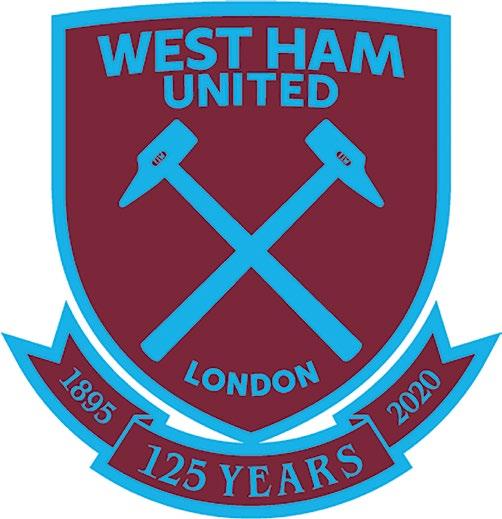
the pitch of people.
‘Hammers’ or ‘Irons’?
West Ham United’s most famous nickname is probably the Hammers but in reality the Club were originally known as the Irons, which is not surprising given the foundation of the Club. However, in 1933 Ogden’s, who were part of the Imperial Tobacco Co. issued a series of 50 caricature supporters cards entitled AFC Nicknames. Card 49 depicts a caricature supporter carrying a huge hammer. The cigarette card proved so popular at the time it was reprinted and is still the most widely used nickname today.
Football League War Cup winners
West Ham United won the Football League War Cup at Wembley in 1940. The Football League War Cup competition was held with the aim of helping to fill the hole left in English football by the suspension of the FA Cup. Charlie Bicknell became the first West Ham United cup-winning captain at Wembley Stadium after they defeated Blackburn Rovers 1-0. Thousands of fans braved the possibility of a German air-raid to attend the match and see West Ham presented with the trophy. After the final, a number of players returned to their service units, while others returned to The Boleyn public house in Green Street for a reception!
Things starts taking a turn for the better
Up until the 50s, West Ham were a fairly unremarkable club, albeit with a passionate fan base. It wasn’t until Ted Fenton took over as manager that things finally started taking a turn for the better; during his eleven years with the club, Fenton made the club’s youth school an integral part of the club’s identity. This change in philosophy led to West Ham forming a talented team led by Bobby Moore, who would soon become one of the greatest football stars of his era. The 1960’s saw the most-successful period in West Ham’s history with the Club winning the FA Cup, the European Cup Winners’ Cup and, so say many, the FIFA World Cup (with home-grown heroes such as Bobby Moore, Geoff Hurst and Martin Peters) The first major trophy arrived in 1964, when future England Manager Ron Greenwood guided his side through a tricky FA Cup run to beat Preston North End at Wembley 3-2. The following season, 1964/65, West Ham swept aside all before them in the European Cup Winners’ Cup, defeating West Germans TSV 1860 Munich 2-0 in a thrilling final at Wembley, a game described by many commentators as one of the finest football matches of all-time. To cap a memorable hat-trick, Moore, Hurst and Peters returned to the national stadium in 1966, with each playing an influential role in England’s FIFA World Cup success. Moore captained the side, while Hurst bagged a hattrick and young midfielder Peters scored in the 4-2 win over West Germany in the final on 30 July 1966. After sixteen seasons, West Ham Legend Bob

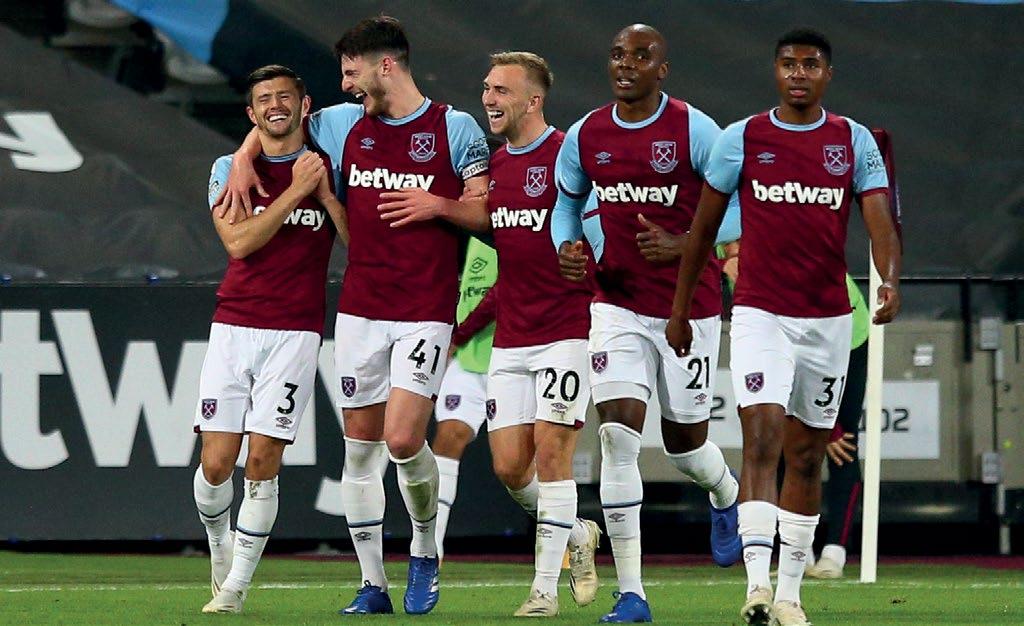
by Moore departed for Fulham and West Ham found themselves facing him in the 1975 FA Cup final at Wembley. An emotional occasion was settled 2-0 in the Hammers’ favour by two goals from an unheralded 21-year-old centre forward Alan Taylor. Taylor had previously scored braces in both the quarter and semi finals of the competition. The 1975 West Ham team remains the last all-English team to win the FA Cup. In 1980, having swept aside three top flight clubs, another FA Cup final meeting with was set up, this time with high-flying Arsenal. The Gunners were considered hot favourites on a warm and sunny afternoon at Wembley on 10 May 1980, but West Ham rose to the big occasion and lifted the trophy courtesy of Trevor Brooking’s first-half header.
The Boys of 86
A season that included an FA Cup run that featured seven ties, including three replays, and inclement winter weather left the Hammers with no league games between 2 February and 15 March 1986 and a fixture backlog in the final weeks of the season.
Between 19 April and 5 May, West Ham played their final seven Division One fixtures, winning six of them, but Liverpool had already clinched the title when they lost 3-1 at Everton to fall to a third – still a record-high finish by three places. With a side comprising Cottee, McAvennie, Ward, Stewart, goalkeeper Phil Parks, fullbacks centre-halves Tony Gale and Alvin Martin, midfielders Alan Devonshire, Alan Dickens, Neil Orr, Geoff Pike and George Parris, the ‘Boys of ’86’ remain revered as one of the finest sides West Ham have ever produced. Unfortunately, circumstances conspired against the Hammers, who were unable to compete in European competition the next season due to the ban on English clubs following the Heysel Stadium tragedy.
Bubbles
West Ham’s association with the song ‘I’m Forever Blowing Bubbles’ dates back over a century. Well known in London’s music halls, it was adopted by the club some years later. Billy J. Murray, a player for the local Park School was nicknamed ‘Bubbles’. He had taken the name due to his resemblance to a fig
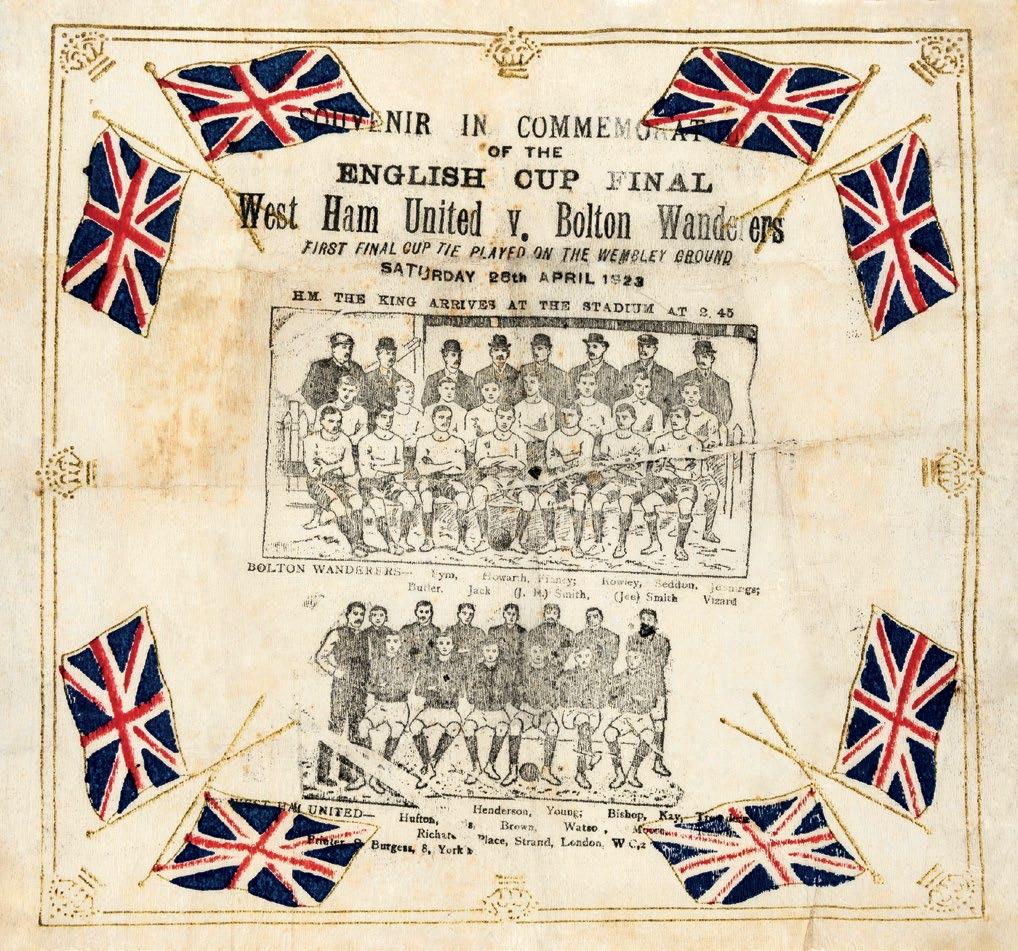
ure in Millais’ painting ‘Bubbles’, which was being used in a soap advert at the time, and headmaster Cornelius Beal would take it upon himself to break into the song ‘I’m Forever Blowing Bubbles’ when the team excelled. Being a close friend of West Ham manager Charlie Paynter and knowing several of the West Ham players through schoolboy football, simply by the coincidence of this relationship, fans took it upon themselves to begin singing ‘I’m Forever Blowing Bubbles’, and the song has stuck. Over the years, it has taken different forms. In 1980, the Cockney Rejects recorded their own Punk version and it was even used in the 2012 London Olympics opening ceremony. Bubbles are now a major part of home match days with the team running out to the song accompanied by the now famous giant bubbles.
The Premier League era
In the early Premier League days, West Ham had a talented team with players such as Rio Ferdinand, Frank Lampard, Michael Carrick, and Joe Cole. The club stayed a midtable club for some years before a relegation 2002-2003 season and when the talents were grabbed by the top clubs. West Ham has, however, managed to establish themselves in the 2000s as a Premier League team with only brief disruptions. After a disappointing loss in the 2004 playoff final, at the second time of asking, Bobby Zamora’s goal sent the Hammers back up in 2005 However, it was in the 2006 FA Cup that made the biggest headlines with a third consecutive trip to Cardiff, where they would face Liverpool in the final. A thrilling final ended 3-3, with only Steven Gerrard’s added-time stunner denying the Hammers a fourth FA Cup triumph. The tie went to a penalty shootout, which the Reds won 3-1, but West Ham had more than played their part. In 2016, West Ham moved to the new Olympic Stadium after over hundred years at Boleyn Ground. The new Olympic Stadium would swallow 60,000, almost twice the capacity of Boleyn Ground.
West Ham Women
After the huge success of last year’s campaign, West Ham and the Women’s team are once again proud to be supporting Breast Cancer Awareness month. In partnership with breastcancernow.org the Women’s team will be wearing this year’s charity shirt throughout the month of October. The shirt will be on sale at West Ham stores and online at officialwesthamstore.com with all profit going to the charity.
